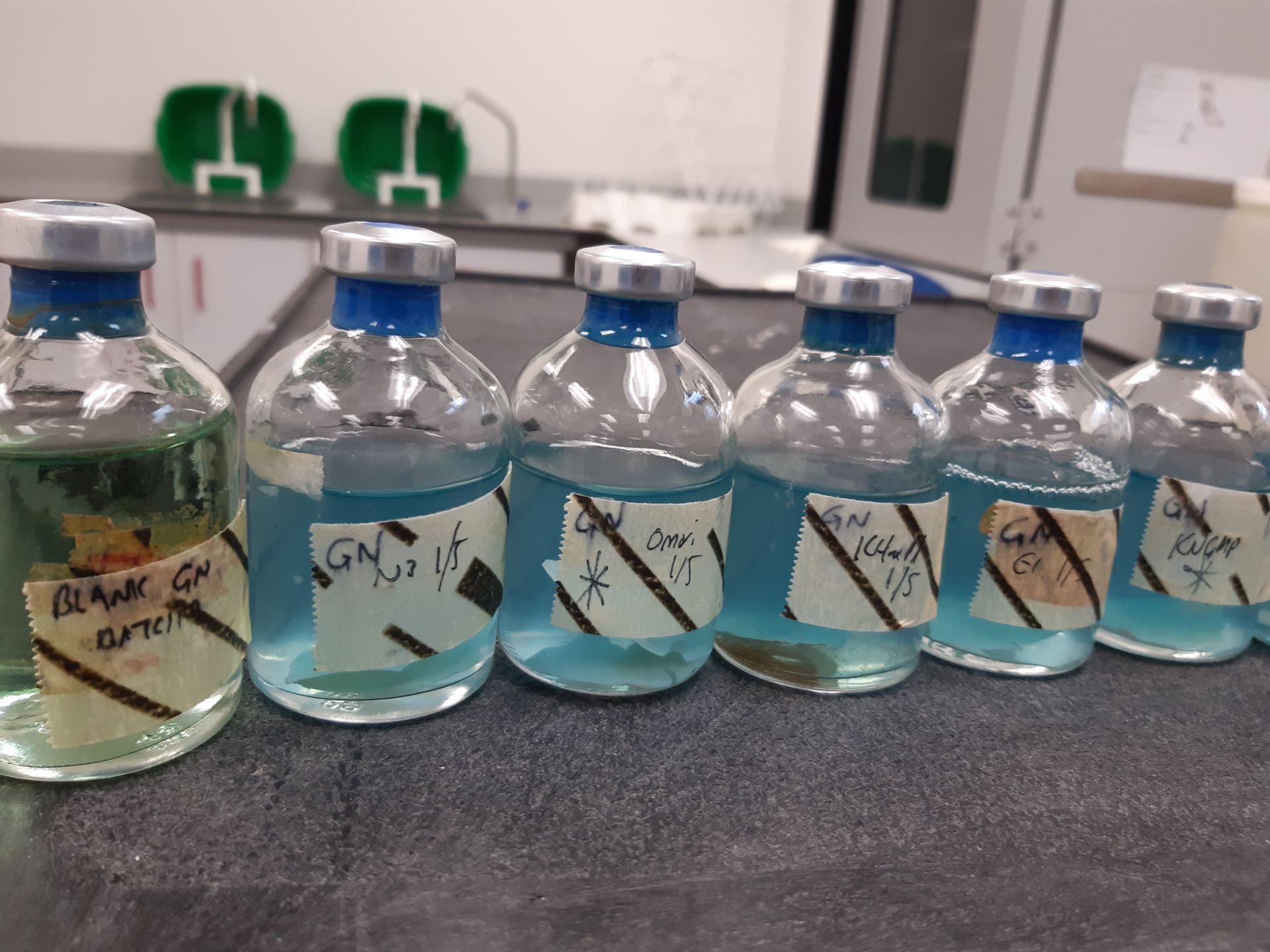Cultivation of groundwater microorganisms
Growing microorganisms in the laboratory allows us to identify interactions between different microbes and their environment, and isolate pure cultures. We collected and filtered groundwater as described here, and then transferred the filters into liquid growth medium.
Culturing microorganisms involved in the nitrogen cycle:
There may be hundreds or thousands of different bacteria and archaea in a sample, which all have different requirements for growth. We use specific growth media to target the groups of microorganisms involved in removing nitrate or ammonia, and added a pH indicator so that we can easily monitor what the microorganisms are doing. If the microbes remove nitrate, the colour changes from green to blue and then purple. If the microorganisms are fermenting instead, the growth medium turns yellow or orange.
Testing how microbial communities respond to change:
Once we have groundwater microorganisms growing, we can change the growth conditions to find out how the microbes react. For example, we can investigate what happens if climate change increases the temperature of an aquifer – do we get more, or less, nitrate removal? We can also find out what happens under other conditions such as if a contaminant is introduced into the aquifer, or if seawater spreads into groundwater.
These approaches enable us to:
Learn how microorganisms interact with each other and their environment
Determine how microorganisms respond to changes in their environment

